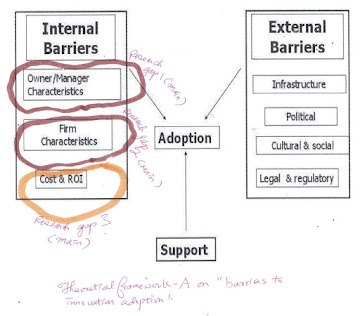This study note is on "how literature review is guided by the agile literature review approach for academic-oriented dissertation projects". It is mainly provided for my MBA dissertation project students. It is also a useful reading for students who are interested in the agile literature review approach (ALRA).
The first guidance comes from the The dissertation academic topic theme, which is the outcome of an intellectual imaginative leap from the response to the triggering point of intellectual curiosity by the researcher. The topic theme tends to be broad at the management topic level, such as innovation barriers, business model design and market development approach for SMEs, etc....
The dissertation academic topic theme offers the student a broad sense of direction, with specific key words, for doing literature search and, subsequently, for literature review. Via the literature review on the literature search findings (e.g. journal articles), the student should now assemble useful academic concepts and sub-topics, and then construct the theoretical framework-A as a conceptual synthesis exercise. The theoretical framework-A in this regard represents a holistic, visualized as well as a more narrowly defined form of understanding of the dissertation academic topic theme. The student can now, based on personal intellectual preference, decide on a few specific research gap items (2 main items, plus 1-2 minor items), which are mapped onto the theoretical framework-A.
Once the theoretical framework-A has been constructed, the literature review context, the theory measurement unit and a few more literature review tasks (based on the research gap items in the framework) become explicit. Moreover, the framework, especially the research gap items shown there, provides even more specific keywords to performance further literature search and review.
The whole literature review process, in line with the agile literature review approach thinking, is an agile one. The following diagram shows the process as a 2-phase one.
Note: In terms of steps and techniques (e.g. diagramming tools to employ) to use, this literature review process for the academic-oriented dissertation project type is different from that of the consulting-oriented ones in the agile literature review approach (ALRA).
Additional readings: (reading 1) a fake example of synopsis doc and (reading 2) the four deliverables of the ALRA for academic-oriented project work.





